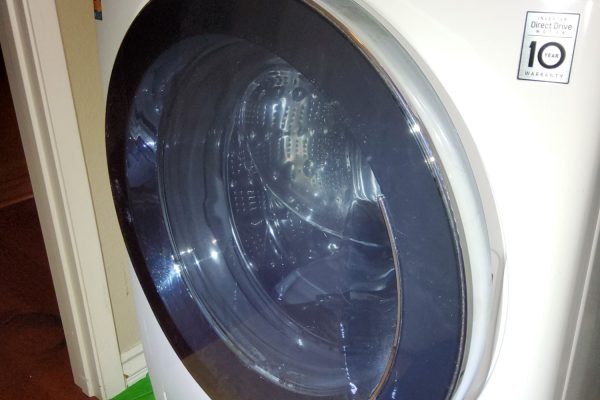A gas stove should provide a clean, steady, blue flame that heats cookware efficiently without leaving marks. When you start noticing black soot collecting on the bottom of your pots and pans, it’s a clear sign that the combustion process is not functioning properly. Soot on cookware is more than a cosmetic issue: it indicates incomplete combustion, potential gas waste, and possible long-term damage to your stove. Understanding why soot appears and how to address it helps prevent more serious problems later.
Why Soot Appears on Cookware
Soot is the result of incomplete combustion. Gas should burn fully, producing heat, water vapor, and carbon dioxide. When the air–gas mixture is unbalanced, the flame cannot burn completely, causing carbon particles to form and settle on cookware.
Two common reasons for this issue include:
1. Poor Combustion Due to Restricted Airflow
Gas combustion requires the right amount of air mixing with the gas before ignition. When the airflow is too low, the flame becomes lazy, yellow, and inefficient. This condition is typical when:
- The air shutter is partially closed or blocked.
- Food debris or grease has accumulated around the burner, reducing oxygen supply.
- The burner ports are clogged, forcing gas to burn unevenly.
- The stove is installed in a location with poor ventilation, impacting oxygen intake.
Poor combustion always results in a yellow or orange flame and a significant amount of soot. Over time, it not only dirties your cookware but also causes your kitchen to heat unevenly, wastes fuel, and can even pose safety risks.
2. Misaligned or Improperly Seated Burner Cap
The burner cap controls how gas flows through the burner and ensures an even flame. If the burner cap is not placed correctly or is shifted even slightly, the gas cannot exit the burner evenly. This leads to:
- Yellow-tipped flames
- Hot spots
- Gas pockets
- Soot deposits on cookware
A misaligned burner cap is one of the simplest yet most overlooked reasons for soot production. Even a small tilt of the cap can disrupt combustion and create a noticeable change in flame behavior.
How Soot Affects Your Stove and Cookware
Aside from being inconvenient and messy, soot can cause several long-term issues:
Damage to Cookware
Soot collects quickly, creating a thick black layer that is difficult to remove. This buildup reduces heat transfer and can permanently stain pots and pans.
Unpleasant Odors and Residue
Soot emits a burnt, smoky smell that can affect food flavor and the overall air quality in your kitchen.
Increased Fuel Consumption
When the flame burns inefficiently, your gas stove uses more fuel to achieve the same level of heat. This increases energy costs.
Potential Health Risks
Incomplete combustion increases carbon monoxide production. While a single misaligned burner may not pose immediate danger, prolonged poor combustion is risky, especially in poorly ventilated spaces.
Wear on the Burner System
Soot buildup around the burner ports can clog them further, worsening combustion and eventually causing burner failure.
How to Reduce or Prevent Soot Formation
If your gas stove is producing soot, you can perform a few basics checks before calling for service.
1. Check Burner Cap Alignment
Ensure each burner cap is centered and seated flush. Even if it appears minor, misalignment disrupts proper gas flow.
2. Clean Burner Ports Regularly
Use a brush or toothpick (never metal pins that can enlarge openings) to remove food debris, grease, and burnt residue.
3. Inspect Flame Color
A healthy flame should be blue with minimal yellow tips. If the flame is mostly yellow or orange, it signals poor combustion.
4. Wipe Down Debris Around the Burner
Grease and food particles around the burner base can restrict airflow.
5. Avoid Overlapping Cookware
Large pans covering too much of the burner can block oxygen supply, leading to soot.
6. Check for Ventilation Issues
Make sure your kitchen has adequate airflow. Poor ventilation lowers oxygen levels, impacting flame quality.
When to Call a Professional
While minor soot issues can be corrected at home, persistent soot formation indicates deeper problems. These may include:
- Faulty regulator or gas pressure issues
- Damaged burner assembly
- Air shutter malfunction
- Hidden blockages inside the gas line
- Improper stove installation
Trying to adjust these components without training can lead to gas leaks or further damage. A certified technician can diagnose the exact cause using specialized tools and restore proper combustion safely.
If your gas stove repeatedly produces soot no matter how often you clean or adjust it, professional service is essential.
Professional Help You Can Trust
If your gas stove is leaving soot on cookware, don’t wait until the problem worsens or becomes a safety concern. A combination of poor combustion and misaligned burner components can escalate into costly repairs if ignored.
For fast, reliable, and professional diagnostics, contact Poway Appliance Repair Service Center. Our technicians will inspect your stove, adjust the combustion system, clean and realign burner components, and ensure your appliance operates safely and efficiently.
Call Poway Appliance Repair Service Center today and restore your gas stove to clean, efficient performance.
Contact us


